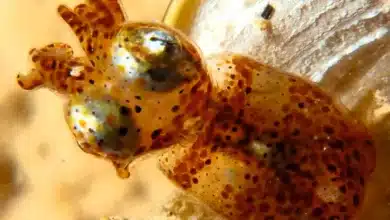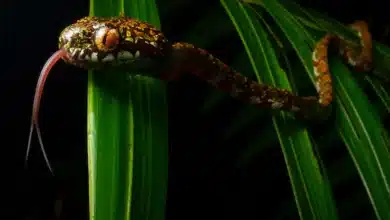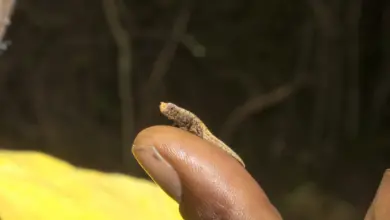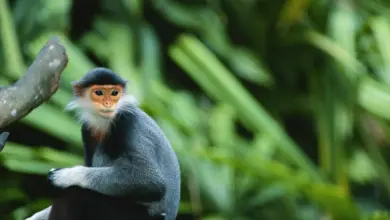Unveiling the Enigmatic Gymnures: Facts and Origin
Scientific Name:
Podogymnura intermedia and P. minima
P. intermedia is a member of the gymnure family of mammals, but despite its pointed nose and golden-brown fur, it is not a shrew. They are related to the hedgehog and are also known as moonrats or hairy hedgehogs.
Like any remaining individuals from the Podogymnura variety, P. intermedia is tracked down in the Philippines. It was found during a review on the mountains of eastern Mindanao, where there had never been studies for well evolved creatures.
“A profoundly particular aspect regarding the Philippines is that each segregated mountain or little mountain range where we have done reviews is that every single one has a few animal groups that happen no place else – not even on neighboring mountain ranges on a similar island,” says co-creator Laurence Heanery, Negaunee Caretaker of Warm blooded creatures at the Field Gallery in Chicago. ” You won’t know what’s there if you don’t look.
The particular sobriquet ‘intermedia’ is gotten from the Latin word ‘intermedium’, meaning ‘halfway’. Because the species is in between P. auroespinula, which is the largest member of the genus, and the other two species, P. truei and P. minima, it was used for this new hedgehog-like creature.
The amount of golden color in its fur is also intermediate. P. truei and P. minima have dim fur with little brilliant shimmers, P. intermedia has brilliant streaks in the fur, and P. aurospinula has long brilliant hairs blended into its pelage,” says Heaney. ” All of them are pretty adorable animals.
It is hoped that additional surveys can be carried out to learn more about the species; however, the process of preparing for them, carrying out the fieldwork in remote locations, and then analyzing the data all take a lot of time, so it is unknown when these will be possible.
The species may be in danger of habitat destruction and degradation if mining, agriculture, and the construction of roads to increase access expand in the area, despite the efforts of indigenous people and conservation groups to preserve their homelands.
Introduction:
Gymnures, often referred to as moonrats or hairy hedgehogs, are intriguing creatures that inhabit various regions across Asia. Despite their rodent-like appearance, they belong to the family Erinaceidae, which also includes hedgehogs. Gymnures possess a unique set of characteristics that distinguish them from other small mammals, making them a subject of fascination for researchers and wildlife enthusiasts alike. In this article, we delve into the facts and origins of these enigmatic creatures, shedding light on their evolutionary history and ecological significance.
Evolutionary Origins:
The evolutionary lineage of gymnures traces back to the Eocene epoch, approximately 50 million years ago. They share a common ancestor with true hedgehogs but have diverged over time, adapting to different ecological niches. Fossil records suggest that the earliest gymnures resembled their contemporary counterparts, indicating a relatively conservative evolutionary trajectory.
Taxonomy and Classification:
Gymnures belong to the order Eulipotyphla, which encompasses a diverse group of insectivorous mammals. Within this order, they are classified into the family Erinaceidae, along with hedgehogs. Despite their taxonomic similarity, gymnures exhibit distinct morphological and behavioral characteristics, warranting their classification as a separate genus, Hylomys.
Physical Characteristics:
One of the most striking features of gymnures is their dense coat of fur, which ranges in color from brown to black, providing insulation and protection against predators. Unlike hedgehogs, they lack spines, relying instead on their cryptic coloration and agile movements to evade detection. Their elongated snout houses a keen sense of smell, aiding in foraging for food in leaf litter and soil.
Ecological Role:
Gymnures play a vital role in maintaining ecosystem balance through their insectivorous diet, which primarily consists of insects, worms, and other invertebrates. By controlling insect populations, they help regulate pest species and contribute to nutrient cycling in forest ecosystems. Additionally, their burrowing behavior aerates the soil, facilitating plant growth and seed dispersal.
Habitat and Distribution:
Gymnures are predominantly found in forested habitats across Southeast Asia, including tropical rainforests, deciduous woodlands, and montane regions. They are well-adapted to diverse environments, ranging from lowland plains to mountainous terrain. However, habitat loss and fragmentation pose significant threats to their survival, leading to population declines in certain areas.
Reproductive Biology:
Gymnures exhibit a seasonal breeding pattern, with peak mating activity occurring during the rainy season. After a gestation period of approximately 40 days, females give birth to litters of 2-5 offspring, which are altricial and rely on maternal care for several weeks. Young gymnures reach sexual maturity within 6-12 months, after which they establish their own territories.
Conservation Status:
Despite being relatively understudied compared to other small mammals, gymnures face conservation challenges due to habitat destruction, hunting, and human-wildlife conflict. Several species are listed as Vulnerable or Endangered on the IUCN Red List, highlighting the urgent need for conservation efforts and habitat protection measures.
Conclusion:
Gymnures are fascinating creatures with a rich evolutionary history and ecological significance. Their unique adaptations and role in ecosystem dynamics underscore the importance of conserving their habitats and understanding their biology. By unraveling the mysteries surrounding gymnures, we can gain valuable insights into the intricate web of life that sustains our planet’s biodiversity.



